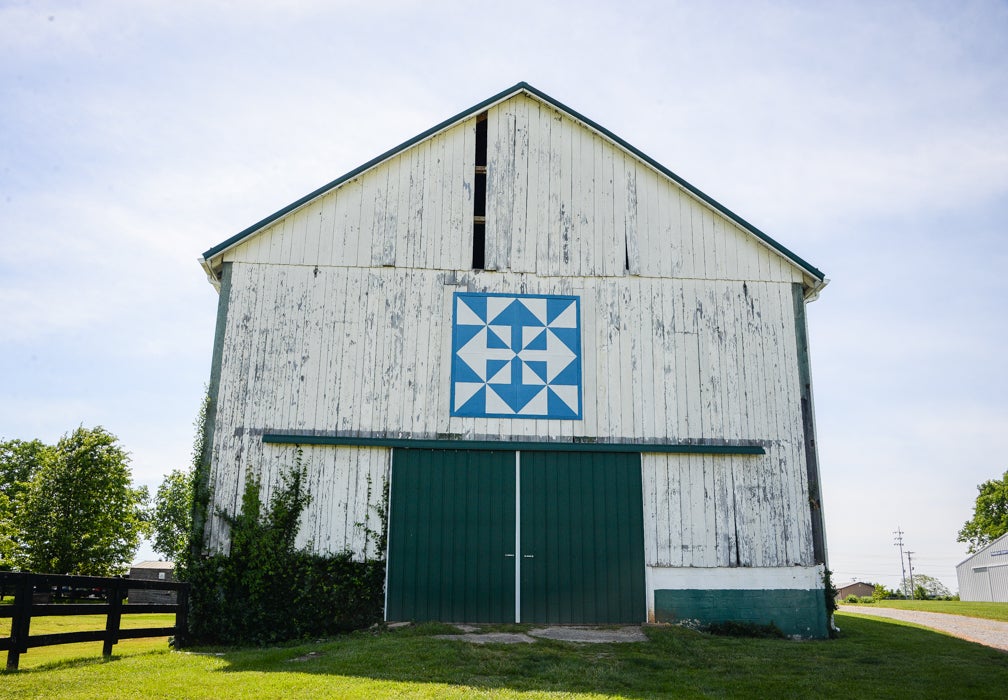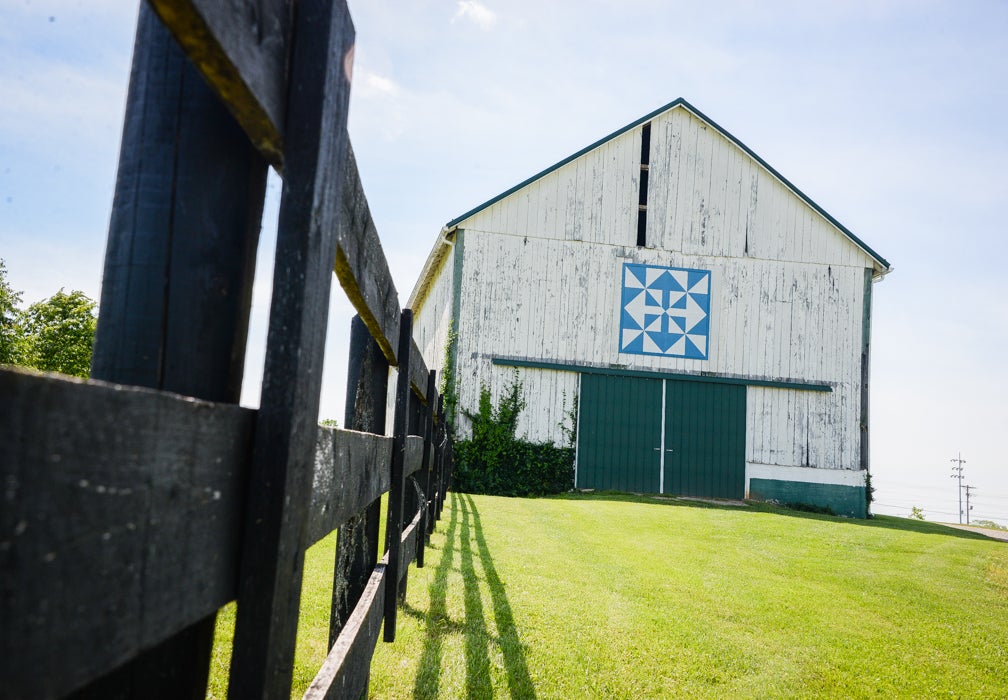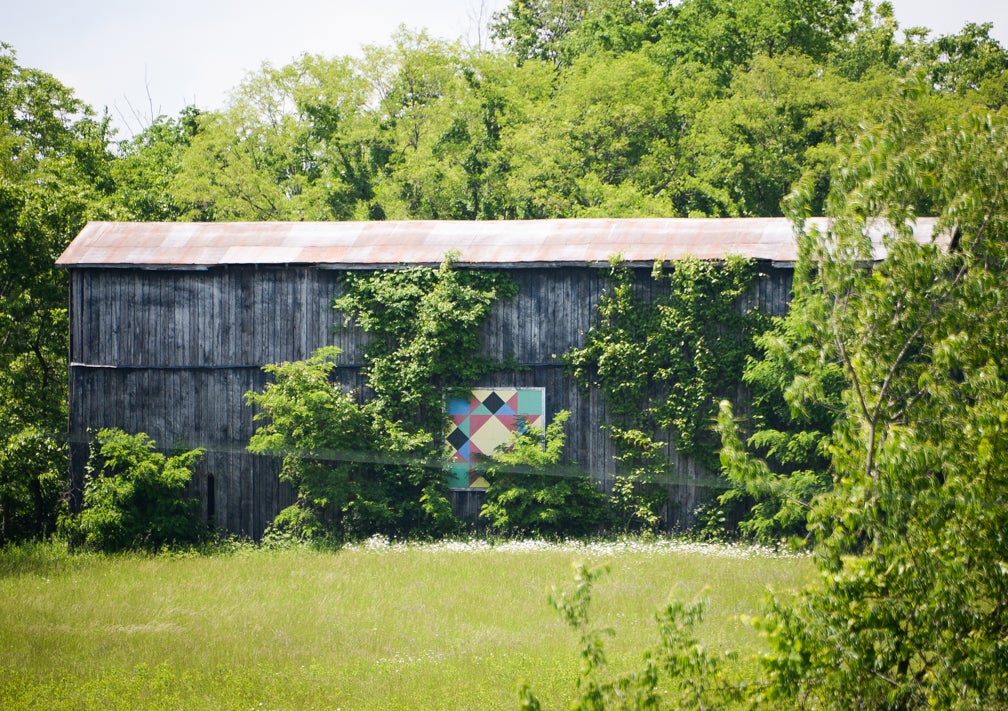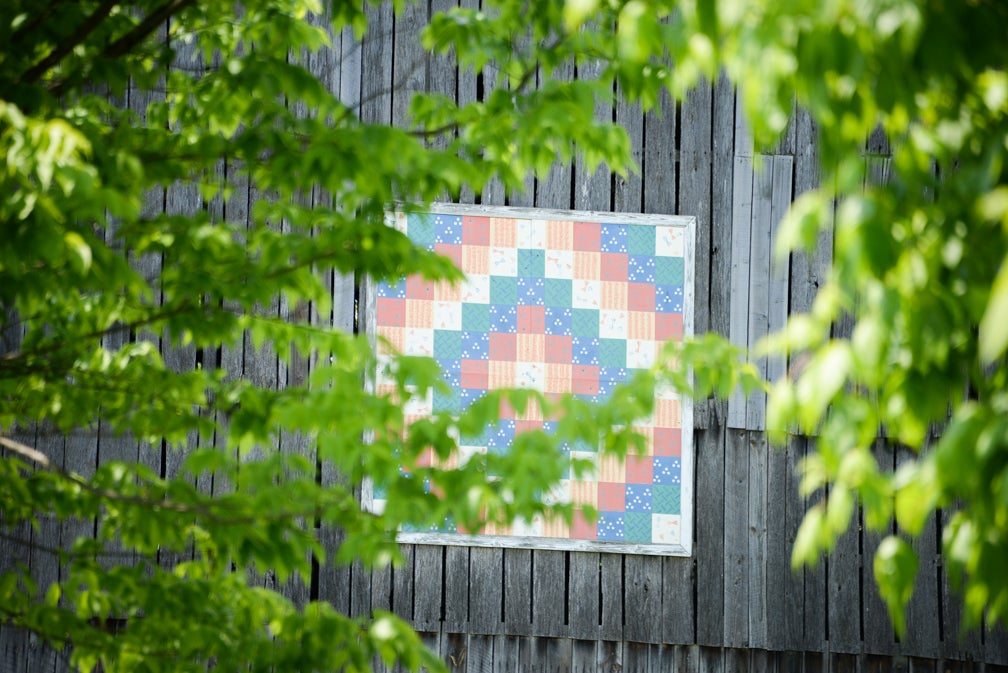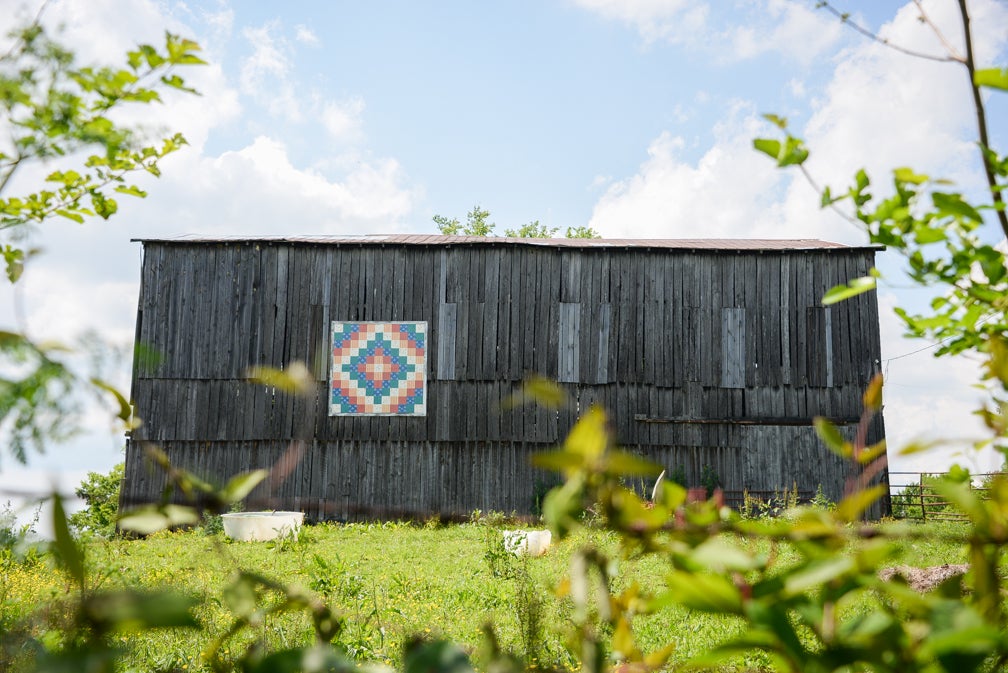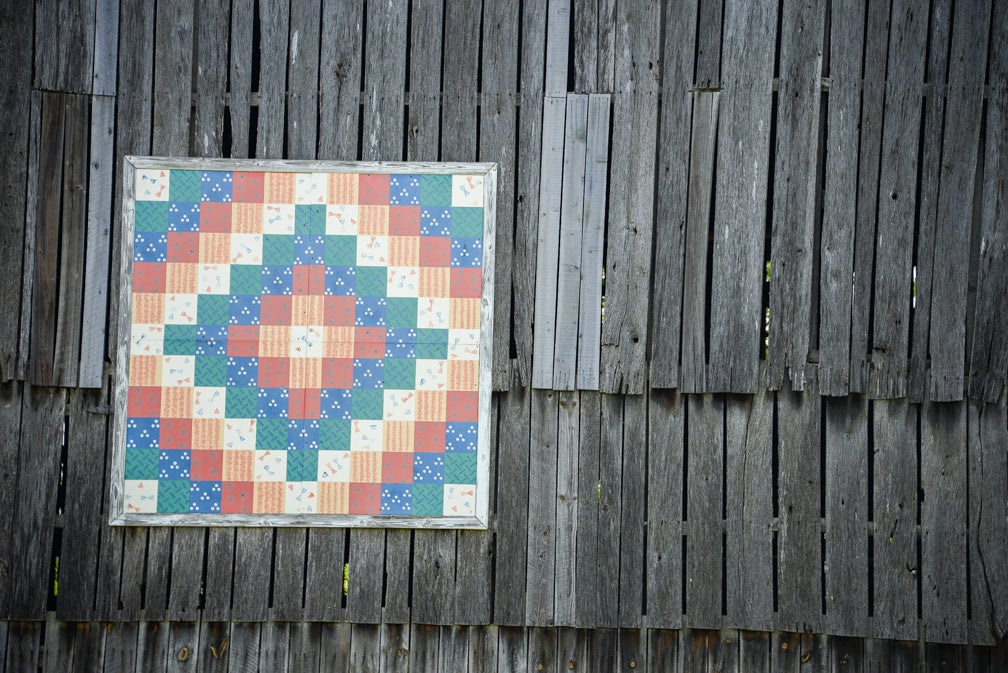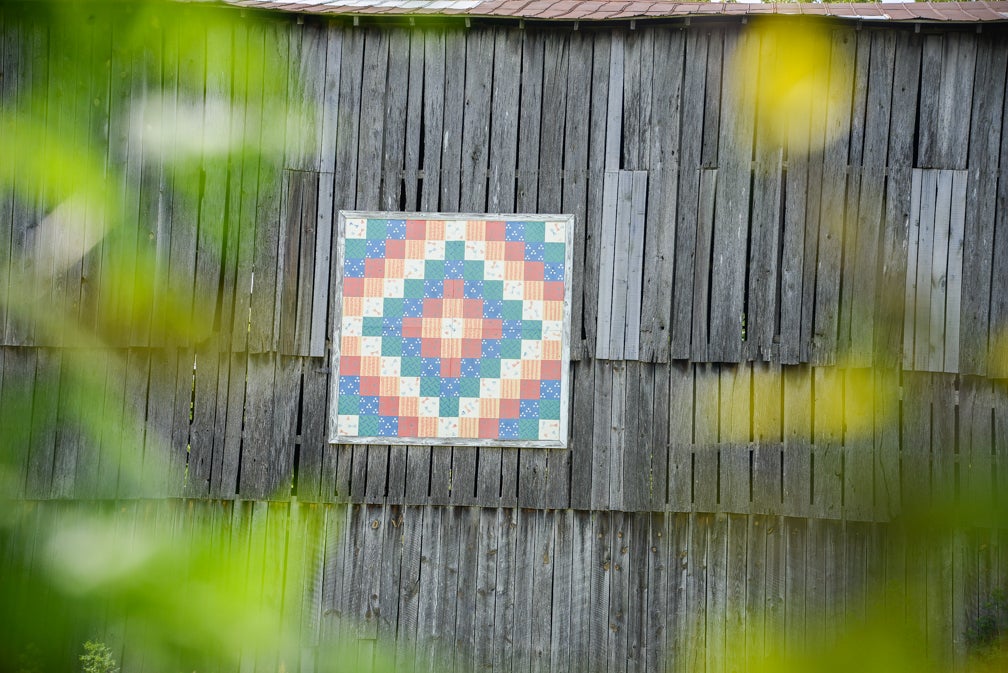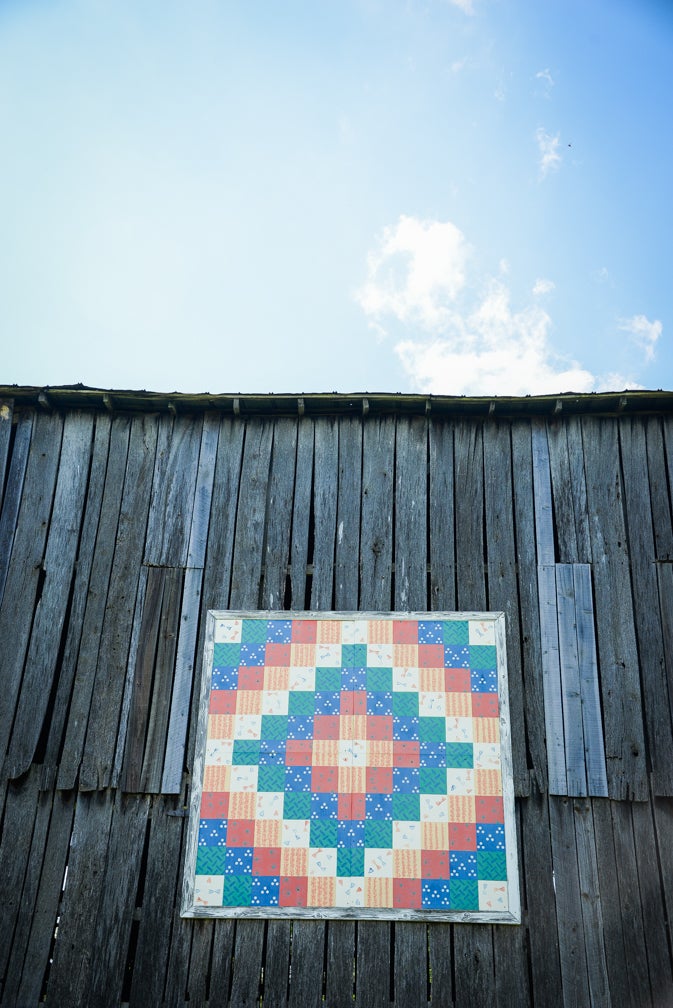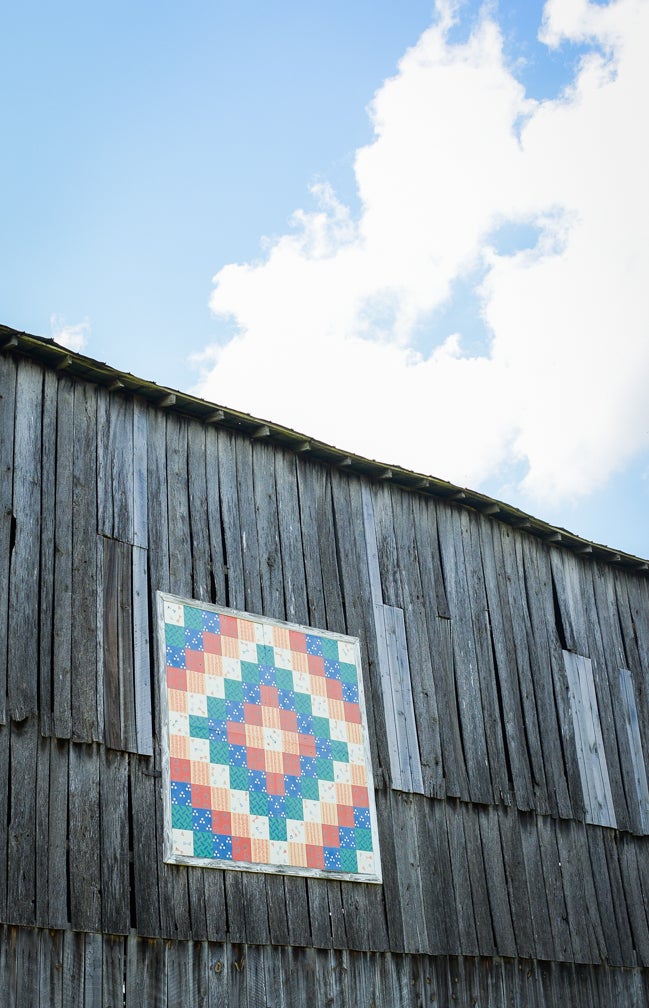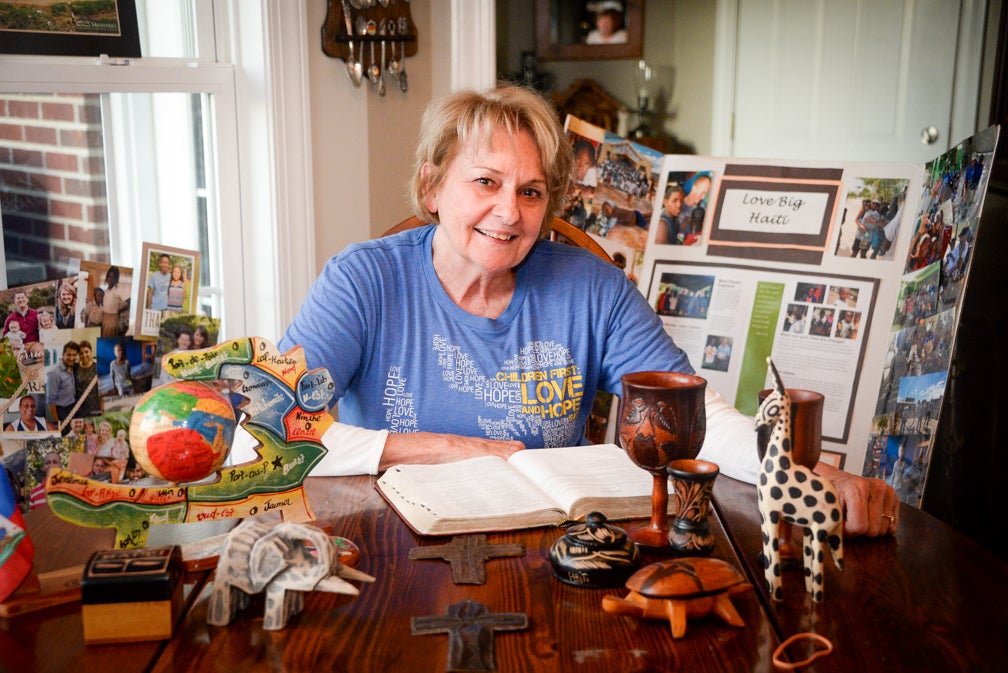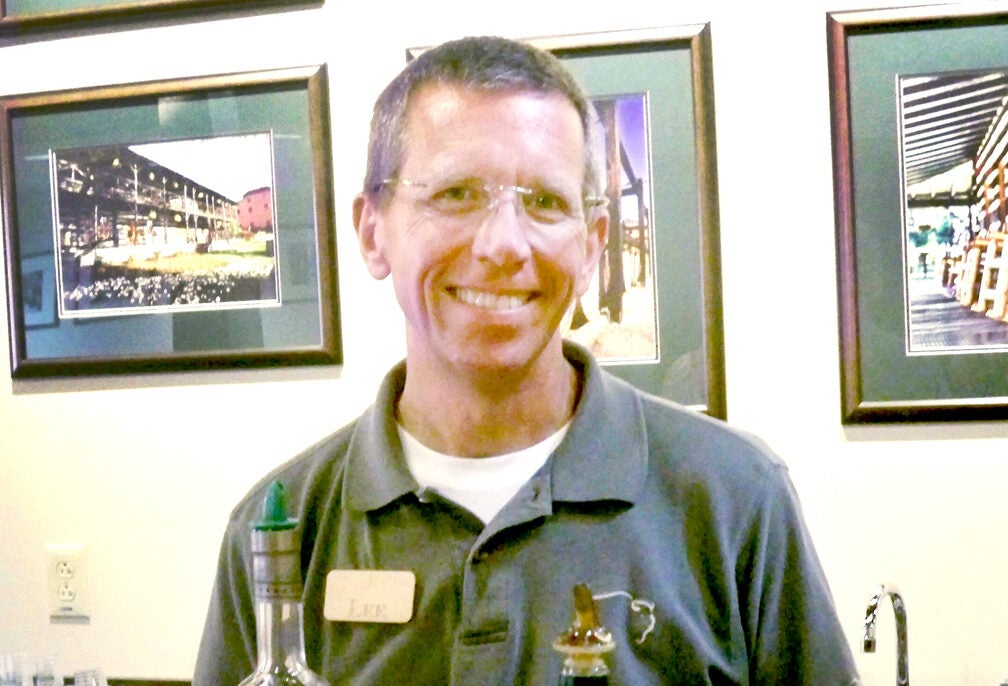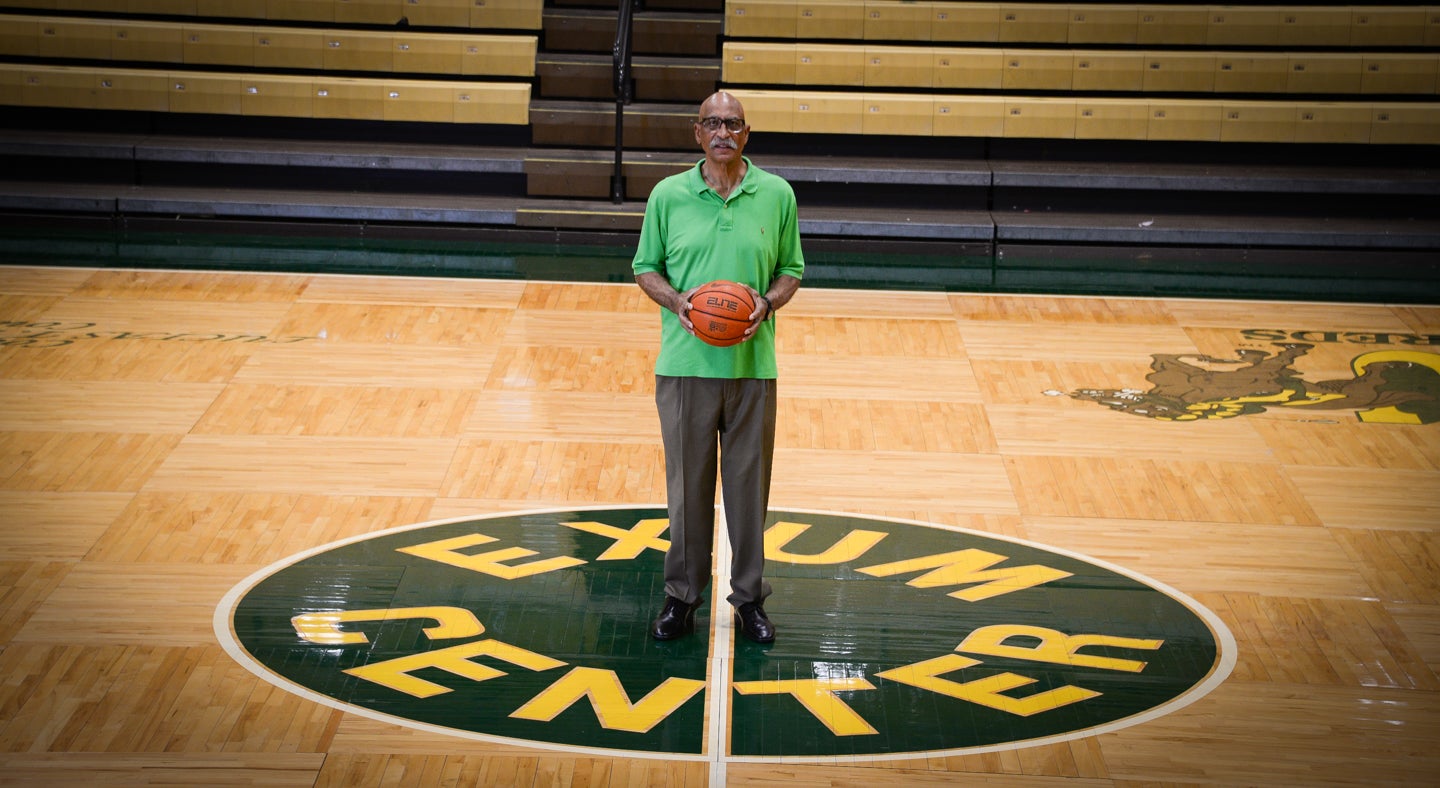By Liz Carey
You’ll see them mostly on country roads — bright colors and block designs; the quilt squares of your grandmother’s treasured heirloom painted onto the front of a barn.
They’re barn quilts and while they may appear to honor a time and tradition from long ago, the popularity of barn quilts started relatively recently.
Pass by the Franklin County Fairgrounds and you’ll see a quilt square of blue and white arrows on one of the fairground’s barns. Like barns dotted across Franklin County, it was hand-painted and hung for the enjoyment of those passing by. Charlie Lewis, Franklin County Parks and Recreation Director, said the barn quilt was put up by a group through the Franklin County Extension Agency.
An earlier barn quilt, one he and his family painted, was removed almost a decade ago.
“My aunt was an art teacher … One day, my grandfather and my aunt started making small barn quilts in different sizes,” he said. “And they decided they wanted to make a larger one. We decided to make a family barn quilt where my parents, my grandfather and my aunt and I all worked on it together. I was already parks and recreation director then, so we thought we’d hang it on the barn at the fairgrounds.”
Instead of one large piece of wood painted with a barn quilt pattern on top of it, each piece of the design was individually painted and then assembled like a quilt square. Unfortunately, the barn quilt faded about five years after it was hung and had to be taken down, he said.
For him, barn quilts just add to the nature of the barns.
“Barns can be a little old and are usually one color,” he said. “I think a barn quilt creates a little interest. It gives them a little life, a little pop.”
Marcella McGill, of Frankfort, says barn quilts are a remembrance of a time and tradition from years gone by.
“I think it’s reminiscent of the quilts of bygone eras,” she said. “It reminds people of the quilts their grandmother used to make.”
Families chose their own patterns and colors for their barn quilt, McGill said. In her case, the red, white and blue country star was decided on because her then husband liked the color red; she liked the color blue and both of them liked the country star pattern.
McGill’s barn quilt at 2498 Jones Lane is mounted on trees in her front yard. Because her barn is so far back, she decided to put it closer to the road so people could see it, she said. The quilt is part of the Stamping Ground Buffalo Gal’s Barn Quilt Trail, which features five barn quilts in Franklin County, as well as others in Scott and Owen counties.
“A friend of mine went on a trip and took the scenic route and saw a bunch of the barn quilts,” McGill said. “We thought it would be nice to put up a barn quilt trail here as well.”
In April, Suzi Parron, author of “Barn Quilts and the American Quilt Trail Movement and Following the Barn Quilt Trail,” as well as the website www.barnquiltinfo.com, visited the Central Kentucky Homemakers Quilt Guild. Parron, in addition to giving a workshop on how to make a barn quilt, gave a history of the movement.
According to Parron, in 2000, Donna Sue Groves decided to honor her mother, Maxine, and her Appalachian heritage, by painting a quilt on her barn in Adams County, Ohio. Groves worked with the Ohio Arts Council to establish a barn quilt trail in Ohio — a “sampler” of various quilt squares created along the countryside that would encourage visitors to travel the backroads to see them.
“Barn quilt squares are taken from cloth quilt patterns, and they always have names. Some people choose a name that means something to them. For instance, a farmer might choose Corn and Beans, since that is what they grow,” Parron said. “Sometimes a barn quilt is a replica of a family quilt that is special to the family. And sometimes the pattern is not so much the meaning — instead, the colors are chosen to represent a school or team loyalty or even the colors of the farmer’s favorite tractor.”
Groves went on to work with other groups in Ohio, Tennessee and Iowa to establish more barn quilt trails, Parron said. Now, 48 states have barn quilt trails, displaying more than 7,000 quilts. And that’s just the ones that are part of an organized trail.
“We only keep track of the ones that are part of an organized quilt trail,” Parron said. “There are thousands of barn quilts all over the country that are created by individuals but not listed on a trail.”
Part of the joy of barn quilts is the individuality of them all, McGill said.
“The hardest part, for us, was coming up with the pattern,” McGill said. “I love all of the different designs. You never see two of the same patterns and they are all different colors.”
The barn quilt on the fairgrounds barn, both the blue and white one, and the one made by Lewis’ family, used to garner plenty of comments, Lewis said. But now, as the quilt pattern has aged, the newness of them has worn off.
But “newness” isn’t what draws people to them, McGill said.
“It seems like everything in life is going so fast these days,” McGill said. “Barn quilts are out in the country — out where life happens. Barn quilts are out in the slow lane. Barn quilts remind us we need to slow down and drive for a while through the countryside. It gives us a chance to stop and smell the roses, or to pick a bunch of wild daisies to put on your kitchen table. They remind us of a time when everyone wasn’t hurrying through life so much.”
How to make a barn quilt
The first barn quilts were literally painted on barns, said Suzi Parron, author of “Barn Quilts and the American Quilt Trail Movement.”
“Local artists were employed in painting the blocks, but the process was time consuming,” Parron said. “Soon the method was changed, and painters began creating quilt blocks on wood, which was then mounted on the barns. A full-sized barn quilt is eight-by-eight feet, which requires two full sheets of plywood, mounted side by side. Many barn quilts are simply painted on plywood, which is first sanded and primed.”
Marcella McGill, whose Country Home barn quilt square is part of the Buffalo Gal’s Barn Quilt Trail, says making a barn quilt is easy.
First, McGill said, you have to decide how big you want your barn quilt to be. Choose a good marine quality board that will last. You can choose to do the barn quilt in smaller sizes, like 4-feet by 4-feet or 3-feet by 3-feet. Remember, it has to be big for people to see it from the road.
Second, prepare your barn quilt using primer as a base coat. Pick a good outdoor primer and paint in one to cover the wood.
Next, choose a pattern and the colors you want on your barn quilt. You can find tons of patterns online.
Trace your pattern on the square and then, using painters tape, outline the pattern with tape.
Then, you’re ready to paint! Pick bright colors that contrast with one another with maximum pop. These quilt squares will be a ways away from the road, so avoid like colors or pastels that tend to blur together from afar. Paint all of the pieces of the pattern that are the same color and let dry. Remove the painters tape when paint is still a bit wet. Once paint has dried thoroughly (give it a day between colors), outline the next color and repeat the process, McGill said. Working slowly and allowing paint to dry thoroughly will help create those crisp, clean lines.
Once the piece is completely dry, it’s ready to hang. If desired, you can add a wooden “matte” around it and frame it, or you can hang it as is directly onto your barn or home.

